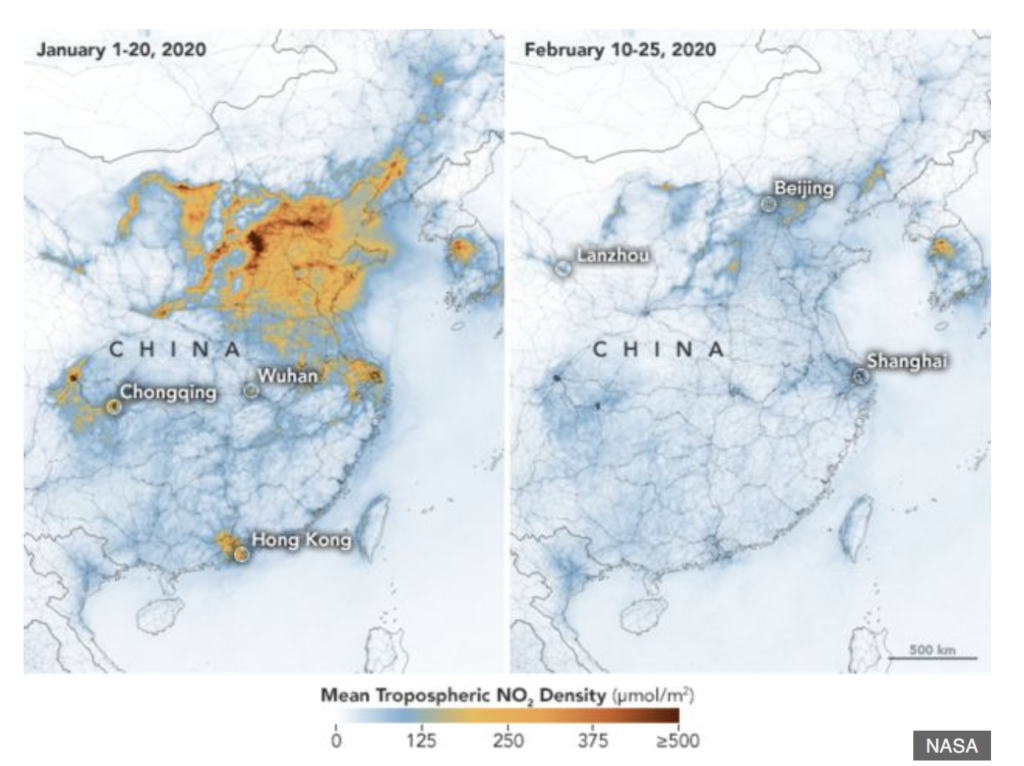Sustainability in the Time of COVID-19 (part 1)

Like you, I’ve sneaked a peek at the maps showing the decline of urban pollution since the novel coronavirus COVID-19 hit China, then Europe and now the US.
My initial reaction was that this is hardly revelatory—having for years regularly tracked the increasingly awful air quality in Vietnam’s two largest cities as well as the significantly cleaner air of London. If you do this, then after a week or so you understand that an early Sunday morning run can take advantage of air that is often 3 times less toxic compared to Thursday evening’s.
Yay, then, isn’t this great? We get a vacation from air pollution, a bright note in a picture that is rather unremittingly gloomy. Except that we’re all indoors, and only getting part, if any, of that benefit. Our indoor environments are often full of toxins, and depending on the age and location of your property and who specified or purchased your interior finishes, it may be more toxic than the air outdoors. That’s not news anyone wants, so apologies for that—I’ll return to this topic later, since I have a few tips in an upcoming post.
While I don’t get very excited about the reduction of greenhouse gases that we’re seeing now—we’ll need to wait until some time after lockdown is lifted to find out if there is any lasting benefit besides a slight slowing in our relentless push towards 2 degrees C—I do see a window of opportunity.
Those maps are showing us a picture of reduced manufacturing activity and car traffic. To a certain extent, it also reflects a reduction in office-related commercial activity as well but that particular portion is not likely to be very significant, since we are simply replacing energy used in the workplace with energy used in the home. Energy at home is normally slightly less than at work due to complex factors but domestic space-heating has a particularly high carbon footprint.
Anyway the point for me is that all the CO2 emissions that we see on those maps is reduced because hundreds of thousands of activity points are missing. And that activity is not a product of some alien force, it is the product of our individual actions. What we buy, how we heat our space, how much we drive.
When lockdown is lifted, we will probably go straight back to the “business as usual” map. An article recently posted by Mat McGrath, environmental correspondent for the BBC said: “Some argue that if the pandemic goes on a long time, any stimulus would more likely focus on promoting any economic growth regardless of the impact on the environment.
But we have a unique chance to capture some permanent, stimulus-resistant benefit, something that can save money in a time when our income will have been depleted and more of us will be counting pennies. Every little helps. Putting aside the fact that we’re now welcoming spring, so space heating will reduce in any case, there are some things we can change on an individual level that could permanently remove that individual CO2 emissions activity. If enough people took this opportunity, that map might permanently alter, something of a blend between Pre-Corona and Corona Times.
My next post is on practical things you can do to reduce energy use at home—some of them not so obvious.
